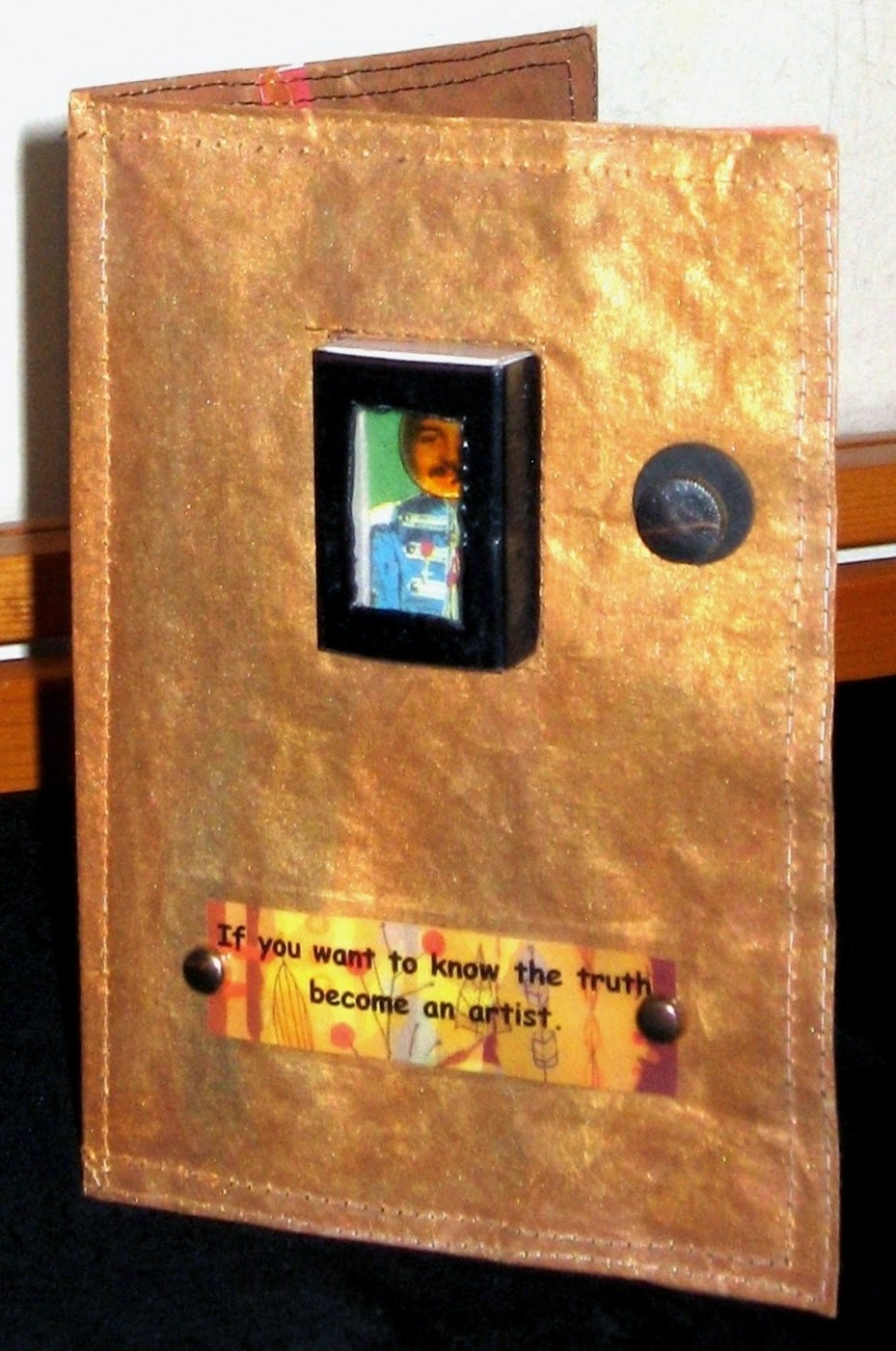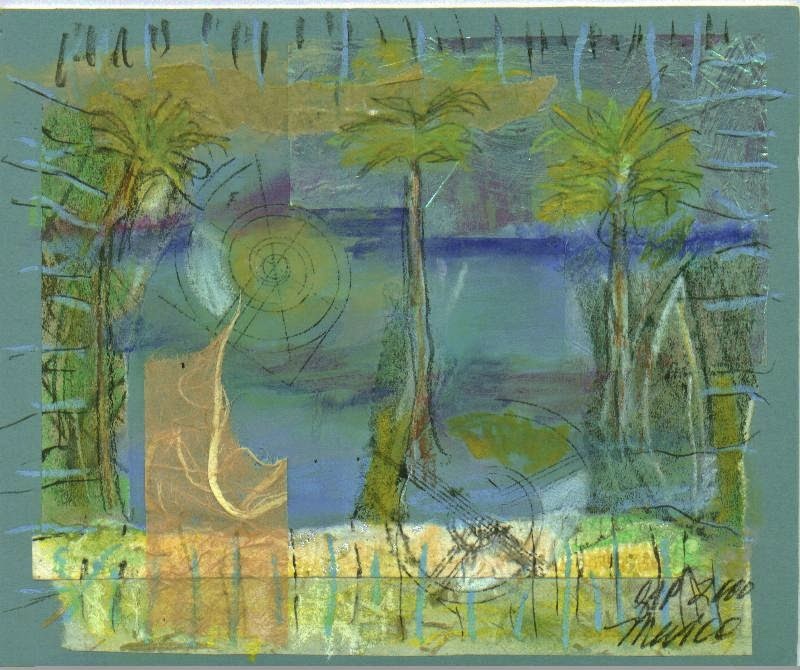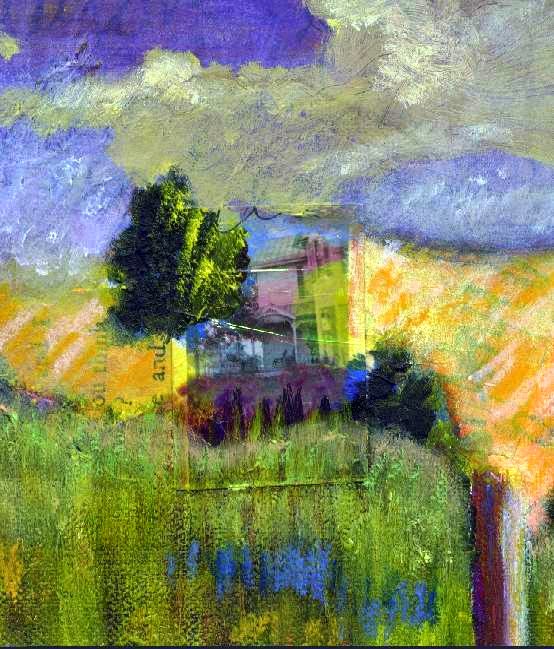 |
Don't forget your journal! This is
one of my refillable matchbox
journals, made entirely of recycled
materials.
|
As I prepare to be on the road, I am reminded of one of the workshops I teach called Planes, Trains and Automobiles: Techniques for Traveling Collages. When you are traveling, you cannot possibly bring all of your art supplies with you. I have perfected a little traveling kit that I like to use, and have found over the decades, that both the familiarity of what I pack combined with the limitations of what I am
able to pack combine for some fun inspiration. If you only bring one thing, though, make sure you bring a
journal / sketchbook!
 |
| I made this collage while sitting at the beach. |
With just a few supplies, you can observe and respond to your environment through your artwork, and have a special record of your travels at the same time!
So, what to bring?
Do: Grab a journal that is a convenient size. Drill, hole-punch, stitch, pre-paint or fold pocket pages into some of the pages.
Don't: try to bring large or heavy tools.
Do: Make a checklist of what you are packing. This will make it easier next time.
Don't: bring any potential "weapons" on the plane, if you are flying. Pack scissors, needles or anything else like that in your checked luggage.
Do: Use the zipper pouch in your suitcase for art supplies.
In my workshop, I show students how to make a petal-fold portfolio in any size to hold their art papers. Any little travel bag will work, however. You can add a place to hold pencils, pens, brushes and markers by stitching or super-gluing rubber bands, hair elastics or sewing elastic. If you use buttonhole elastic, you can fill all those little holes with different tools and supplies.
I will take some pictures as I pack my materials to show you what I bring along. If I can, I always bring a strip of self-adhesive photo corners, a few brass brads, some folded waxed paper, small scraps of matboard, a small container of Yes! glue, a few brushes, pencils and pens, a tin of watercolor crayons or pencils, a tin of oil pastels, a sewing needle, including one I can use to poke holes, colored embroidery floss, some Tear Away, a bone folder, a glue stick, a pair of small paper scissors, 1 small container of white paint, 2 mini-spray bottles, one for water and one for rubbing alcohol, a xylene colorless blender with a small metal spoon, some black and white photocopies for transfer, some throw-away pictures and, finally, a few small strips of fine grade sandpaper. It all fits in a tiny little bag, and fits, next to my portfolio of collage papers, right into my zipper pouch of checked baggage. I am good to go!
 |
I applied oil pastels over part of an old painting on
canvas board that I had cut up to bring along on a trip. I
made my collage right on top while I was out on the road. |












